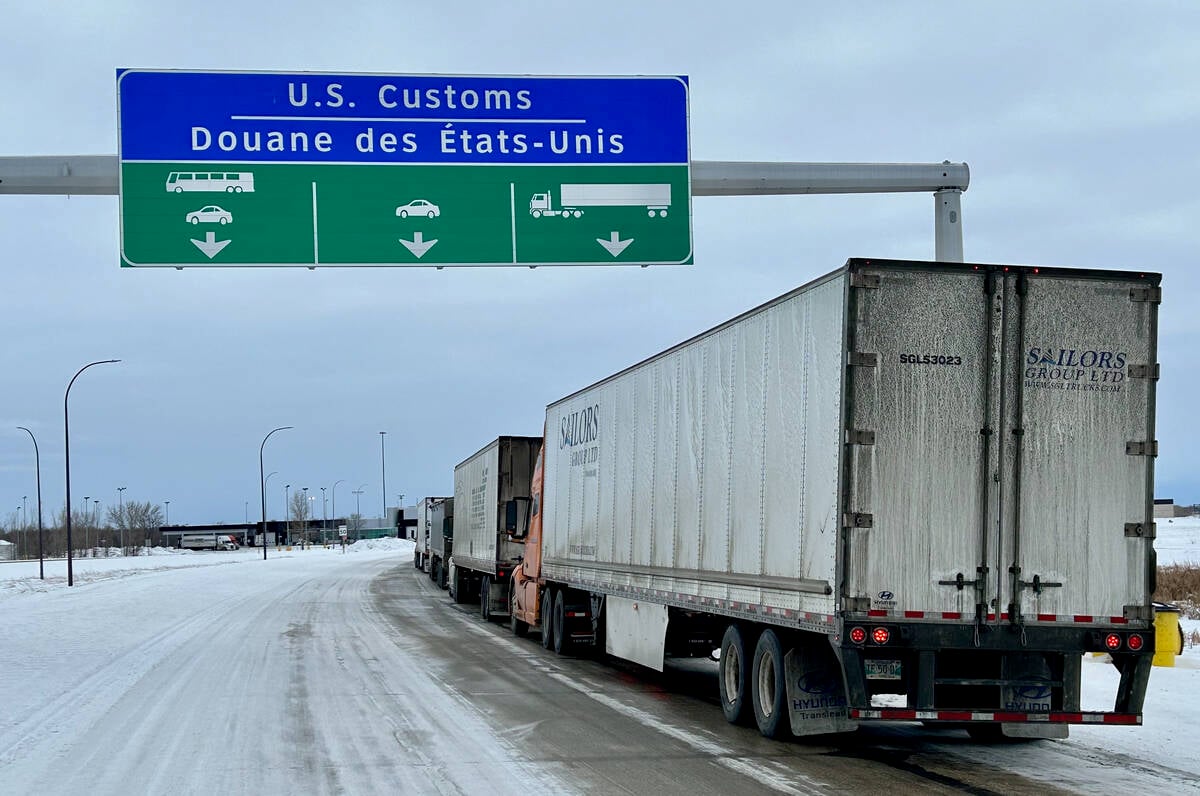The U.S. drought may be taking the blame for Big Sky Farms entering receivership last week but court documents show that Canada’s second largest pork company was in trouble long before feed prices shot up.
Ernst and Young has been named the receiver for the Humboldt, Sask., company that produces about one million hogs per year at facilities in Saskatchewan and Manitoba, and with contract growers in Iowa.
An affidavit filed by Neil Stride of the Bank of Nova Scotia, the agent for the company’s lenders, says Big Sky owes them nearly $69 million. It also owes $8.4 million to suppliers.
Read Also

U.S. bill could keep out Canadian truckers
The Protecting America’s Roads Act, which was tabled in the U.S. House of Representatives at the beginning of October, would “rid the country of illegal immigrant commercial truck drivers and ineligible foreign nationals.”
The secured lenders include Bank of Montreal, National Bank of Canada and Farm Credit Canada.
In Manitoba last week, Puratone Corp., a major pork producer based in Niverville, entered protection under the Companies Creditors Arrangements Act. It is expected to be back in court Oct. 10.
Puratone owes nearly $41 million to the Bank of Montreal and $40 million to Farm Credit Canada, among others.
The secured lenders in the Big Sky situation were also involved in helping Big Sky climb out of creditor protection in 2009 after H1N1 fears and the strengthening Canadian dollar caused serious financial difficulty.
Big Sky emerged from CCAA protection in March 2010.
But by April 2011, the company was again in trouble and had defaulted on several terms of its credit arrangements, including failing to pay the full principal amounts of two loans.
Further defaults occurred in January, March and April 2012.
As a result the lenders demanded payment and gave notice of intention to ensure security under the Bankruptcy and Insolvency Act.
In May, Big Sky entered into exclusive discussions with a prospective buyer and on June 28 an agreement between Big Sky and the lenders set out a 15 week sales process that would have seen the company sold and the lenders paid in full by Oct. 15.
By the end of August, however, those discussions ended without a sale.
The lenders were not willing to advance more money, except to a receiver.
But Stride’s affidavit also noted that additional factors were at play.
“Particular urgency has additionally been created by a sudden and severe downturn in the North American hog industry this summer,” said the affidavit.
Kevin Brennan, senior vice-president at Ernst and Young in Vancouver, said the “recent phenomenon” of high feed costs due to the drought in corn-growing areas of the U.S. and an increase in the number of hogs going to slaughter drove the ultimate move into receivership.
“A number of producers are early shipping to slaughter at lighter weights,” he explained. “This is causing a glut.”
Ironically, this could also pull the hog industry out of its poor state.
Brennan said many in the industry expect that because packers are pulling so many hogs forward now they may actually short themselves in the future and create demand and higher prices.
On the feed side, prices are expected to remain high through the next year.
The affidavit noted that in the last three months Ontario corn and soybeans rose from $13.50 per bushel to $17, wheat climbed from $6.50 to $8 and feed barley went from $4.50 to $5.50.
Neil Ketilson, general manager of SaskPork, said although Big Sky doesn’t feed much corn, the prices of all feed commodities are linked.
The increase resulted in a loss of between $30 and $50 per pig, he said.
“$30 in our business is just too much,” he said.
Brennan said a buyer might see Big Sky’s potential as part of a vertically integrated operation. The matter is expected to be back in court in early October.
Ketilson added the assets will sell at below their actual value, which creates a huge opportunity for someone, as long as new owners can tough out the short term.
He said Big Sky is part of the 60 percent of the province’s hog business that doesn’t have a land base and has to buy feed.
“The 40 percent that do have a land base won’t run into insolvency problems,” he said.
SaskPork has talked to the province about the possibility of a short-term hog loan program. Ketilson said producers don’t want more debt but they do want to stay in operation and animal welfare issues must be addressed.
Manitoba Pork Council and Keystone Agricultural Producers have called for $130 million in government loan guarantees to help hog producers get through the current crisis.
When it comes to Puratone, KAP president Doug Chorney said he knew of one farmer who was owed $36,000 for feed he delivered to Puratone before it entered credit protection.
In an affidavit filed in court, chief executive officer Raymond Hildebrand said Puratone’s problems have been building.
“The immediate problem is a liquidity crisis prompted by escalating feed costs due in part to the drought in the United States. However, this is but the latest of the series of misfortunes which have befallen the hog industry in this country over the past five years and undermined the working capital of a well-managed, nationally renowned and previously profitable business.”

















